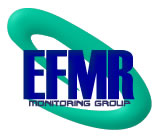Monday, October 4, 2010
Small Business Advantage Grant Program; Opportunity
NRC stalls key repairs for 32 years
The NRC has reaffirmed several times since then that sumps at certain plants have been at risk of becoming overwhelmed by paint chips, insulation, and other free-floating debris that would form if an accident occurred. If those sumps fail, there wouldn’t be anything recirculating water to cool the reactors. NRC Chairman Gregory B. Jaczko acknowledged Wednesday the agency “has been grappling with this issue for quite some time now.” That’s an understatement. More than 18 years elapsed before regulators finally showed signs of getting serious about it in September of 1996. Then, they began drawing up plans for what’s known as Generic Safety Issue 191, an industrywide requirement to make the long-overdue sump fixes.Read moreSince then, it’s been another 14 years of talking.
Beaver Valley: Residual Heat Removal System Piping Leak
Leaks and Spills of Tritium at U.S. Commercial Nuclear Power Plants
This is a list of reactor sites that experienced a leak or spill to the environment at some time since initial startup. The list only includes those leaks or spills where tritium in the leak source or the groundwater sample was greater than 20,000 pCi/L. The term “leaks and spills” includes all types of non-routine releases in which tritium from reactor operation contacted the soil in an unintended fashion.Download PDF to read more
NRC is Failing to Protect Public by Allowing Nuclear Plants to Leak Radioactive Water with Immunity, Report Finds
The Nuclear Regulatory Commission (NRC) routinely fails to enforce its regulations prohibiting nuclear power plants from leaking radioactively contaminated water, according to a report released today by the Union of Concerned Scientists. The report, “Regulatory Roulette: The NRC’s Inconsistent Oversight of Radioactive Releases from Nuclear Power Plants,” found that the NRC ignored more than two dozen contaminated water releases that have occurred since 2006. The agency did not issue any fines or impose any sanctions for these federal safety requirement violations. Over the past several months there have been leaks discovered at the Pilgrim nuclear power plant in Massachusetts, the Salem plant in New Jersey, and the Vermont Yankee plant. Radioactive leaks can include cobalt-60, cesium-137, tritium and strontium-90, which can increase the risk of cancer and other radiation-induced health problems. “NRC’s enforcement record was spotty before 2006,” said David Lochbaum, author of the report and director of UCS’s Nuclear Power Safety Project, “but since then, the agency has given power plants a free pass when it comes to leaking radioactively contaminated water.”Read more
Audit of Three Mile Island Unit-2's Cleanup Funds Requested Prior to FirstEnergy Merger
Eric Epstein, Chairman of TMI-Alert, Inc. filed a petition at the Nuclear Regulatory Commission seeking enforcement action in the form of a Demand for Information requiring FirstEnergy to provide the NRC with site-specific information and financial guarantees that demonstrate and verify the licensee has adequate funding in place to decommission and decontaminate Three Mile Island Unit-2, and that the proposed merger between FirstEnergy and Allegheny Power will not place additional financial pressures on FirstEnergy’s ability to satisfy its decommissioning obligations in 2036.
Mr. Epstein said, “After 31 years of broken promises, faulty assumptions, and inaccurate projections, the NRC should hold FirstEnergy accountable and demand a site-specific funding plan at the nation’s worst commercial nuclear accident.”
Download Press Release
Download Petition
